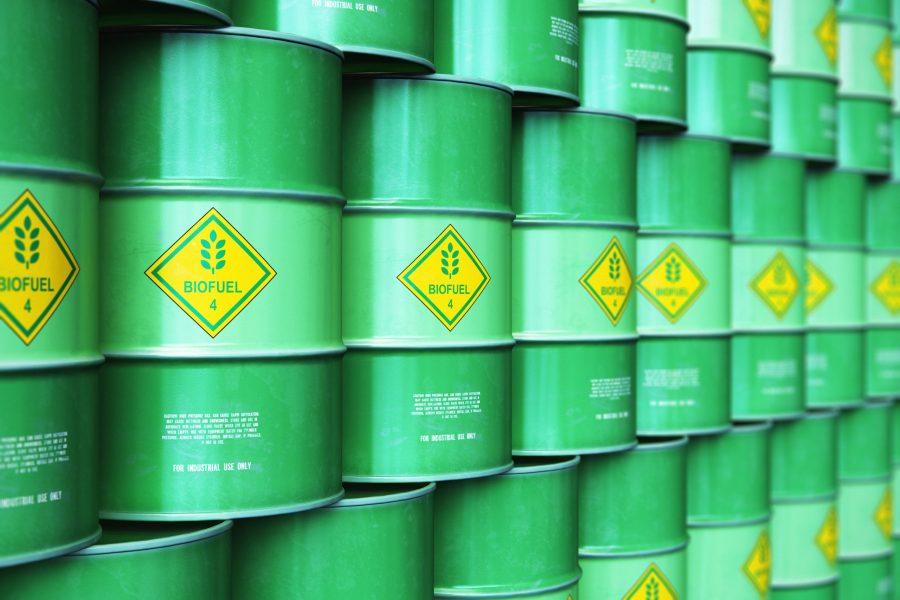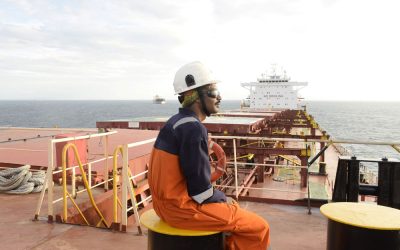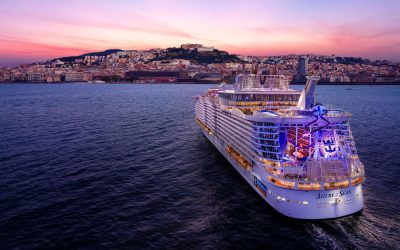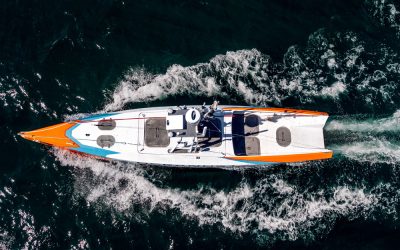By Panos Koutsourakis, vice president of global sustainability, ABS
With reporting of data in compliance with the IMO’s Carbon Intensity Indicator (CII) regulation well underway, shipowners and operators are focused on how to optimise their operations and gain improvement in CII ratings. The options include optimisation of vessel efficiency using energy efficiency technologies and the use of alternative and low-carbon fuels. Full adoption of cleaner fuels is some years away but options exist for the transition period.
Analysis by ABS has concluded that drop-in biofuels have the potential to make a substantial improvement to a vessel’s Carbon Intensity Indicator (CII) rating. The research concludes that blending with biofuels could improve a vessel’s CII performance regardless of whether the vessel is powered by diesel, methanol or LNG.
The CII establishes a downward trajectory measurement of a ship’s carbon intensity, which is the amount of carbon emissions generated by a unit of transport work, equivalent to one nominal tonne of cargo carried over a nautical mile. The CII assigns an ‘energy efficiency’ rating to all ships (from A to E), based on the calculated carbon intensity.
Vessels in the D and E categories will have to demonstrate continuous improvement, moving progressively towards category C. Ships that spend three consecutive years in category D, or one year in category E will be subject to a mandatory review of the Ship Energy Efficiency Management Plan (SEEMP) and a plan of corrective actions must be made to achieve the Required Annual Operational CII.
Calculation methods
The 2022 guidelines on operational carbon intensity indicators and the calculation methods provided the possibility for the CO2 Emission Conversion Factor (Cf) to be obtained from the fuel oil supplier, supported by documentary evidence, in case the type of the fuel oil is not covered by the relevant guidelines. However, the current regime has been measuring carbon emissions tank-to-wake but there are discussions underway to change this to well-to-wake, accounting for the full lifecycle of emissions.
In the July meeting of the Marine Environment Protection Committee (MEPC 80) the Marine Fuel Life Cycle GHG Guidelines (LCA Guidelines) were officially adopted and a work programme for further enhancement of the guidelines was agreed upon.
To facilitate the uptake and establish a common approach among flag administrations regarding the assignment of a carbon factor for biofuels and thus ensuring a level playing field, pending the development of policy instruments for the use of LCA Guidelines, the Committee also adopted Interim Guidance on the Use of Biofuels. This suggests that, under certain provisions, biofuels that have been certified as sustainable by an international certification scheme may be assigned a carbon factor equal to the value of the well-to-wake GHG emission of the fuel, based on the certificate.
Blending the biofuel from biogenic sources with diesel and other fuels up to 30% would thus improve the overall carbon intensity and thus a ship’s CII rating.
The commonly used biofuel products for shipping are the biodiesel blends, which contain 20-30% of pure biodiesel and offer 15-20% carbon emission reduction on a well-to-wake basis. ABS analysis concluded that a container vessel propelled by traditional low-sulphur fuel could see its rating improved from E to C in 2023 with the adoption of a 30% blend of biodiesel. The advantage of biofuels to decarbonisation extends to the supply chain and the bunkering infrastructure required for fuelling. Since biofuels are simple fuels of the same molecular structure, their cost is confined to the fuel itself rather than in any additional treatment, meaning they represent a compelling option once supply and regulatory questions are addressed.
Availability
The next issue for owners – common to all alternative fuels – is availability in sufficient quality to support CII compliance and ultimately a net zero carbon shipping industry. ABS expects there to be sufficient biofuel supply to meet current demand since the majority of energy majors have invested in producing sustainable biofuels.

ABS vice president of global sustainability Panos Koutsourakis
Availability is increasing at the world’s big bunkering hubs and is expected to increase further over time, especially after the decisions of MEPC 80, as demand signals from shipowners grow. However, the shipping industry must be in no doubt that it will experience competition, principally from the aviation industry, which is also eyeing the use of sustainable biofuels to lower its carbon emissions.
Nevertheless, drop-in biofuels are a powerful tool for shipowners and operators to accelerate fleet decarbonisation and improve their CII trajectory today. ABS is involved in pilot projects on the application of biofuels that have shown us the significant potential of these fuels to contribute to reducing a vessel’s well-to-wake carbon intensity and transform its rating.
ABS has published a series of sustainability whitepapers focused on alternative fuels, breaking down the available options including their challenges and advantages, as well as other factors to take into consideration during the decision-making process. The whitepaper ‘Biofuels as Marine Fuel’ focuses specifically on drop-in biofuels and can be downloaded from the ABS website.






